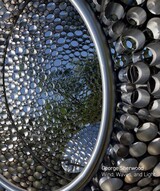4 books by Lin, Jan
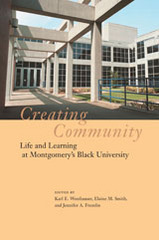
Creating Community
Life and Learning at Alabama State University
Edited by Karl E. Westhauser, Elaine M. Smith, and Jennifer A. Fremlin
University of Alabama Press, 2008
Creating Community explores how faculty members at Alabama State University, a historically black university in Montgomery, have been inspired by the legacy of African American culture and the civil rights movement and how they seek to interpret and extend that legacy through teaching, scholarship, and service. Authors describe a wide range of experiences from the era of segregation to the present day. These include accounts of growing up and going to college in Alabama, arriving in the South for the first time to teach at ASU, and the development of programs such as the National Center for the Study of Civil Rights and African American Culture. Together, the essays present viewpoints that reflect the diverse ethnic, cultural, and academic backgrounds of the contributors and of the university.
[more]
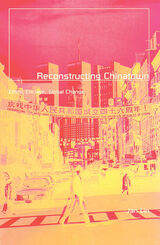
Reconstructing Chinatown
Ethnic Enclave, Global Change
Jan Lin
University of Minnesota Press, 1998
Winner of the 1998 Robert Park Award for Best Book in Community and Urban Sociology
An exploration of this fascinating community as a window on globalization.
In the American popular imagination, Chinatown is a mysterious and dangerous place, clannish and dilapidated, filled with sweatshops, vice, and organized crime. In this well-written and engaging volume, Jan Lin presents a real-world picture of New York City's Chinatown, countering this "orientalist" view by looking at the human dimensions and the larger forces of globalization that make this vital neighborhood both unique and broadly instructive.
Using interviews with residents, firsthand observation, archival research, and U.S. census data, Lin delivers an informed, reliable picture of Chinatown today. Lin claims that to understand contemporary ethnic neighborhoods like this one we must dispense with notions of monolithic "community." When he looks at Chinatown, Lin sees a neighborhood that is being rebuilt, both literally and economically. Rather than a clannish and unified peer group, he sees substantial class inequality and internal social conflict. There is also social change, most visibly manifested in dramatic episodes of collective action by sweatshop workers and community activists and in the growing influence of Chinatown's denizens in electoral politics.
Popular portrayals of Chinatown also reflect a new global reality: as American cities change with the international economy, traditional assumptions about immigrant incorporation into U.S. society alter as well. Lin describes the public disquiet and official response regarding immigration, sweatshops, and the influx of Asian capital. He outlines the ways that local, state, and federal governments have directed and gained from globalization in Chinatown through banking deregulation and urban redevelopment policy.
Finally, Lin puts forth Chinatown as a central enclave in the "world city" of New York, arguing that globalization brings similar structural processes of urban change to diverse locations. In the end, Lin moves beyond the myth of Chinatown, clarifying the meaning of globalization and its myriad effects within the local context.
"Reconstructing Chinatown is a significant work that is relevant in several fields. It is probably the best book on Chinatown because it covers several critically important topics in examining life in Chinatown, utilizing both quantitative and qualitative data. Second, it is a great contribution to the race and ethnic relations field because its deconstruction of negative stereotypical images provides an alternative model for examining immigrants and ethnic enclaves. Finally, this book has nicely connected the field of race and ethnic relations with urban studies by examining an ethnic enclave with the 'global city' perspective. This book is ideal as a textbook for courses related to Asian American communities, urban studies, and race and ethnic relations, particularly at the graduate level." American Journal of Sociology
"The book's most significant contribution is to problematize the public stereotypes of Chinese workers as servile and accepting victims in the debased environment of Chinatown. It has provided empirical evidence to demonstrate that despite internal conflicts and power struggles, collective actions are likely to consolidate a sense of group solidarity and political empowerment. Overall, the book is highly recommended for those who are interested in taking a critical approach to race and ethnic studies, immigration issues and the development of ethnic enclaves in North America." Canadian Journal of Sociology Online
"The book succeeds at many levels. Especially in its excellent descriptions of historical contexts and contemporary events, its outstanding comparisons among a variety of ethnic groups and places, and its superb discussions on the globalization of capital and labor and their imprints on local communities. It should be applauded that Lin's well-organized and well-written book contributes significantly to our understanding of New York's Chinatown, an ever-changing urban ethnic enclave." Urban Geography
Jan Lin is associate professor of sociology at Occidental College in Los Angeles. He previously taught at Amherst College and the University of Houston.
[more]
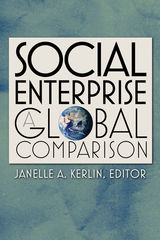
Social Enterprise
A Global Comparison
Edited by Janelle A. Kerlin
University Press of New England, 2009
Social enterprise—the use of market-based, civil society approaches to address social issues—has been a growing phenomenon for over twenty years. Gathering essays by researchers and practitioners from around the globe, this volume examines, from a local perspective, the diverse ways in which social enterprise has emerged in different regions. Each chapter examines the conceptualization, history, legal and political frameworks, supporting institutions, and latest developments and challenges for social enterprise in a given region or country. In the final chapter, Janelle A. Kerlin presents a comparative analysis of the various models and contexts for social enterprise, showing how particular strengths in each environment lead to different enterprise initiative models.
[more]
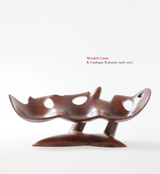
Wendell Castle
A Catalogue Raisonné, 1958–2012
Emily Evans Eerdmans
The Artist Book Foundation, 2014
Sculptor and furniture designer Wendell Castle (1932–2018) carved a distinct path in furniture making over nearly six decades of a distinguished career, and this long-awaited recording of his oeuvre, Wendell Castle: A Catalogue Raisonné, 1958–2012, beautifully presents the extraordinary scope of his artistry and craftsmanship. The voluminous accounting of his works, beginning with Castle’s earliest, mid-century works through to his unabashed experiments with unconventional materials (gel-coated fiberglass and metallic automobile paint) and his latest signature wood laminations, is comprehensive and detailed. Three essays of varying perspectives introduce the catalogue raisonné followed by an extensive accounting of his enormous oeuvre, his exhibitions, numerous awards, and the collections of his works, as well as a substantive bibliography. With his organic and whimsical approach to his various mediums, he seamlessly merged sculpture and design into one discipline, obscuring the distinction between the two. He invented the technique of carving stacked laminations of wood, and his later explorations into the qualities of fiberglass as a sculptural medium are unparalleled. Castle is widely collected and his works are in the permanent collections of more than 40 museums and cultural institutions around the world, including The Metropolitan Museum of Art (New York); Museum of Modern Art (New York); Smithsonian American Art Museum (Washington, DC); Musée des beaux-arts de Montréal (Quebec, Canada); and the Victoria and Albert Museum (London).Castle has also been the recipient of many honors and awards, including four National Endowment for the Arts grants, three honorary degrees, the American Craft Council Gold Medal, and a Life-time Achievement Award from the Brooklyn Museum of Art.
[more]
READERS
Browse our collection.
PUBLISHERS
See BiblioVault's publisher services.
STUDENT SERVICES
Files for college accessibility offices.
UChicago Accessibility Resources
home | accessibility | search | about | contact us
BiblioVault ® 2001 - 2024
The University of Chicago Press






